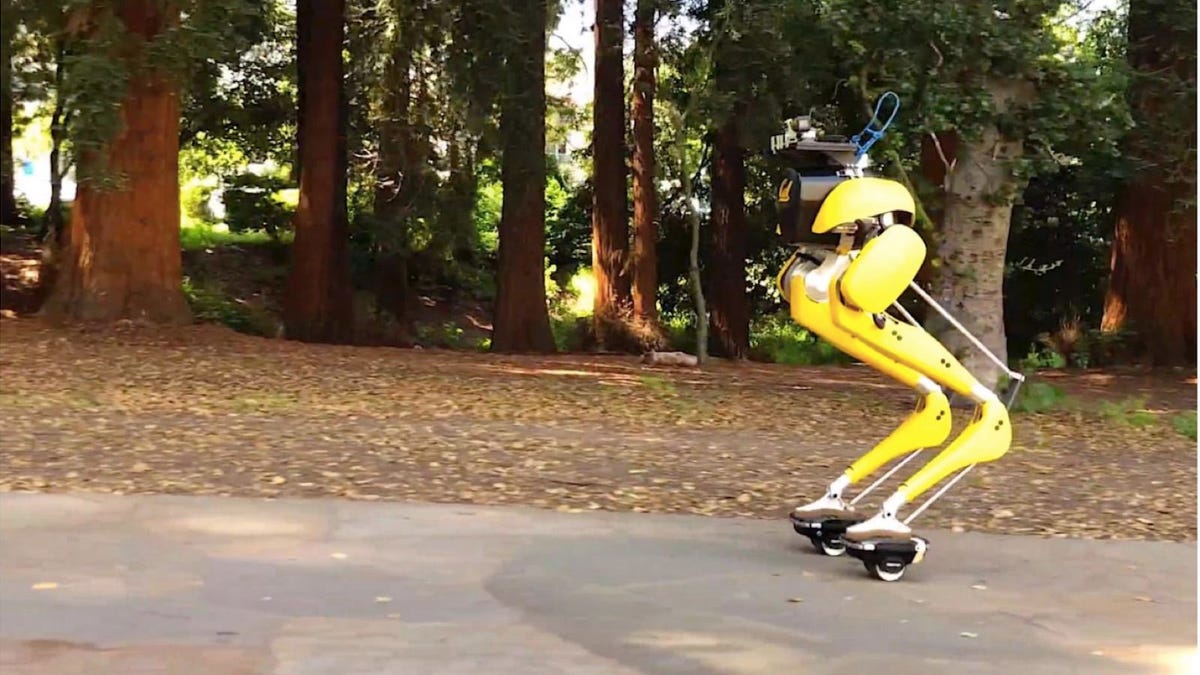Cassie Cal robot can probably ride hovershoes better than you
It's comforting to know that even robots need training wheels.

Cassie's got a brand new pair of roller skates... well, sort of.
If you're not in a lab at MIT or closely following this particular branch of engineering, it might seem like a lot of robots have been showing off lately. The SpotMini, for example, has been performing feats of strength every few months.
UC Berkeley's Hybrid Robotics Lab is adding its bipedal robot, Cassie Cal, to the mix. The researchers are teaching Cassie to ride motorized single-wheel skates, or hovershoes, IEEE Spectrum Magazine reported Thursday.
The skates are pretty hard to operate, even for a human. In addition to balancing, you control the skates by leaning forward, backward, left and right. The researchers added a sensor to Cassie to help with control.
Shuxiao Chen, Jonathan Rogers, and Bike Zhang, UC Berkeley students who worked on the project, said it took about eight months to teach Cassie to skate. The process involved mathematical models, simulations to test the algorithms and figuring out how to interface and communicate with Cassie and various sensors. In short: lots of trial and error.
The team said the larger goal is to teach robots to achieve multi-modal locomotion, which humans are capable of. Optimizing locomotion for legged robots, according to the team, would improve travel efficiency over various terrains.
"Autonomous robots with multi-modal locomotion capabilities can have a big impact in the real-world from food delivery to security and surveillance to search and rescue missions," the team said.
Originally published June 7.
Update, June 10: Adds comments from UC Berkeley student team.

